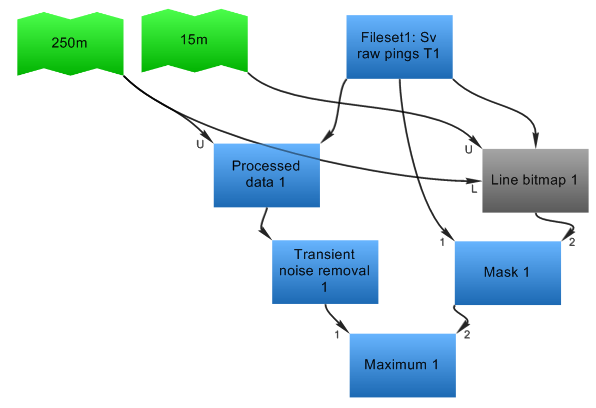Masking with lines
Isolating data so that it is unaffected by operator algorithms is a useful technique.
This technique may be useful with the Transient noise sample removal operator. The Transient noise sample removal operator assesses all samples in the operand. Physically, transient noise may be judged to be insignificant above a specified depth and data above a certain depth should not be processed by a transient noise removal filter. The Transient noise sample removal operator offers no provision to exclude data in such a way.

Figure 1: A dataflow that uses lines to exclude data and then restores the excluded data at a later point.
Two lines are defined. A line at 250m line is used to represent the depth above which a transient noise sample removal filter should not be applied and another line at 15m to mark data associated with surface features and transducer ring down. On the left, the Processed data 1 variable applies a 250 m exclude above line to retain data below 250 m and set sample values at depths less than 250m to No data. The Transient noise sample removal variable filters transient noise from samples below 250 m. On the right, a Line bitmap variable outputs data between the 15m and 250m lines. A mask based on the Line bitmap data and the original data is created where masked data is set to -999.0 dB. The Maximum variable reunites the Transient noise removal data from below 250m to the unfiltered data between 15m and 250 m lines.
Note: Operators like the Data range bitmap and Region bitmap, and Transient noise ping removal offer other ways to include or exclude data.
See also
Virtual variable applications
About virtual variables
Operator licensing in Echoview